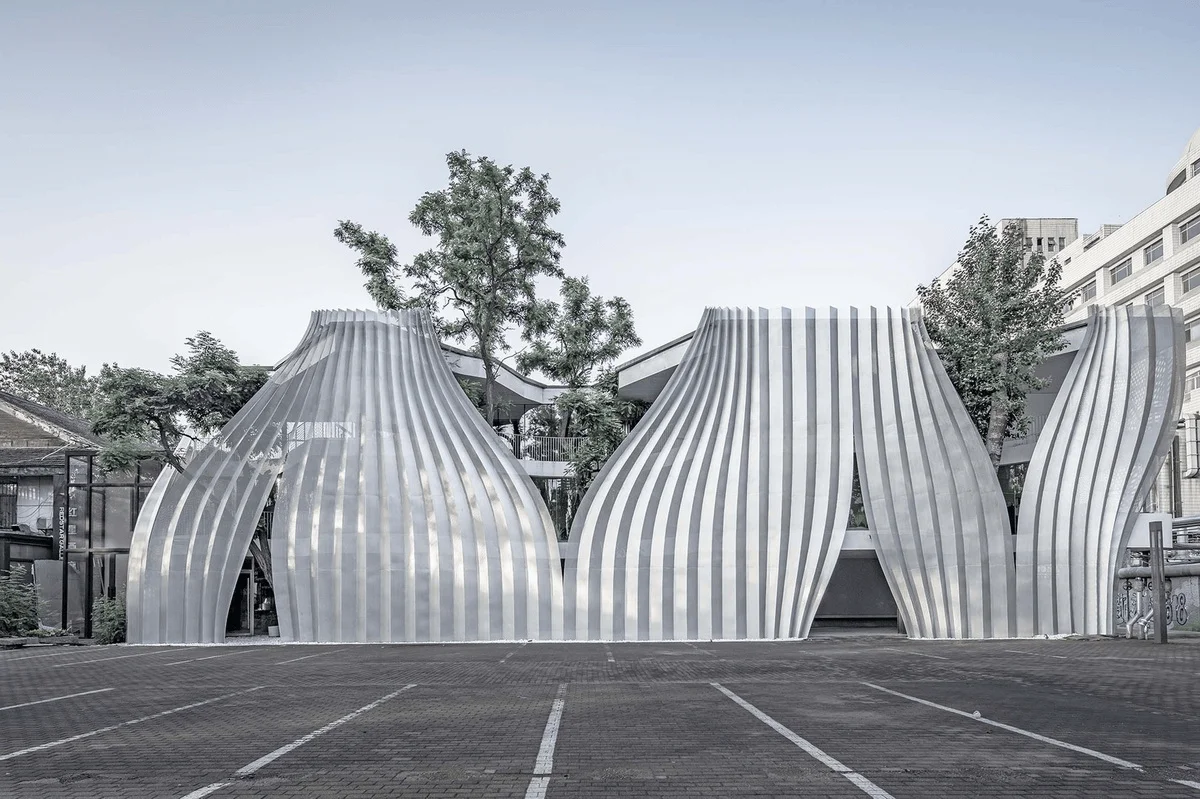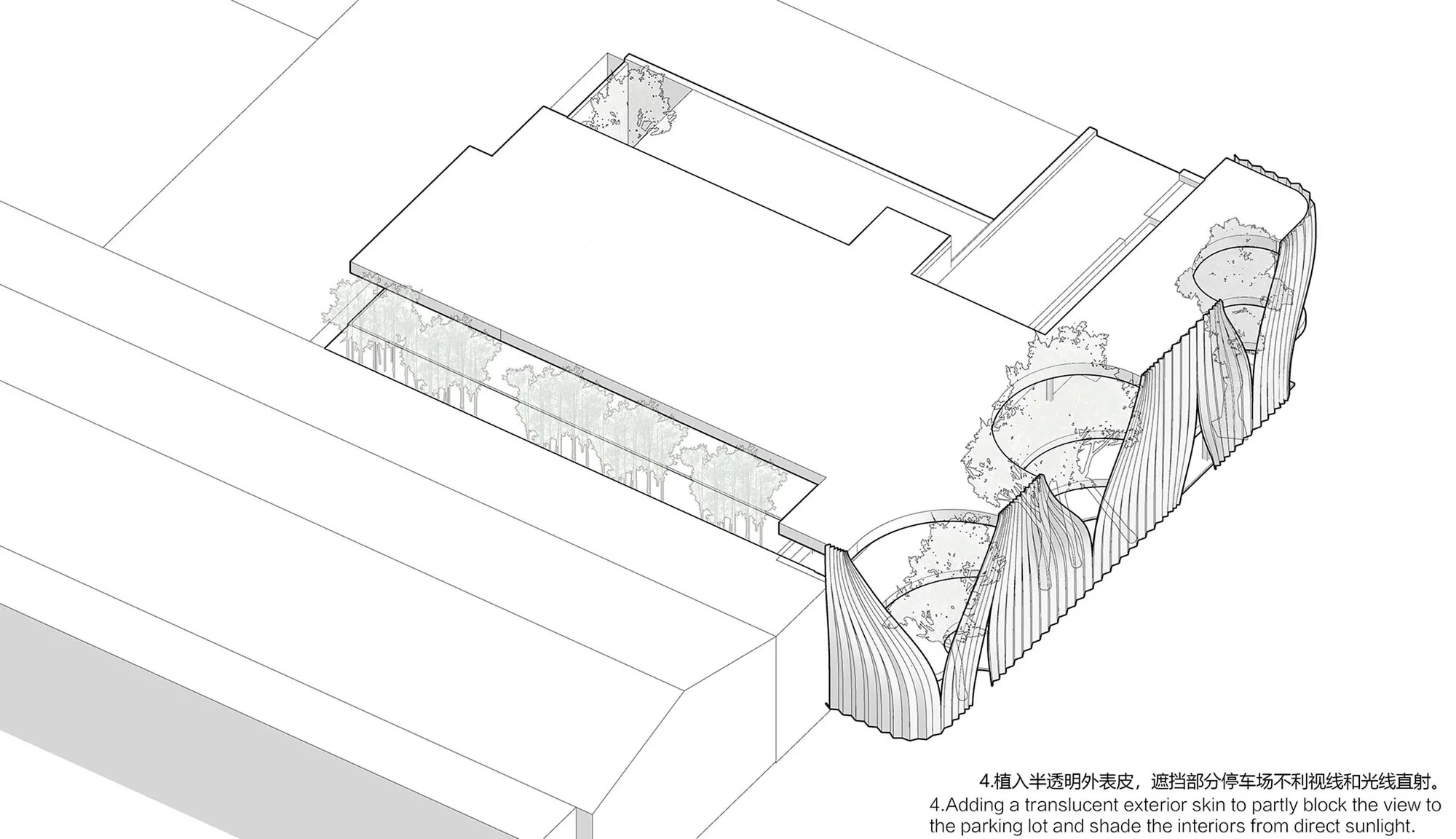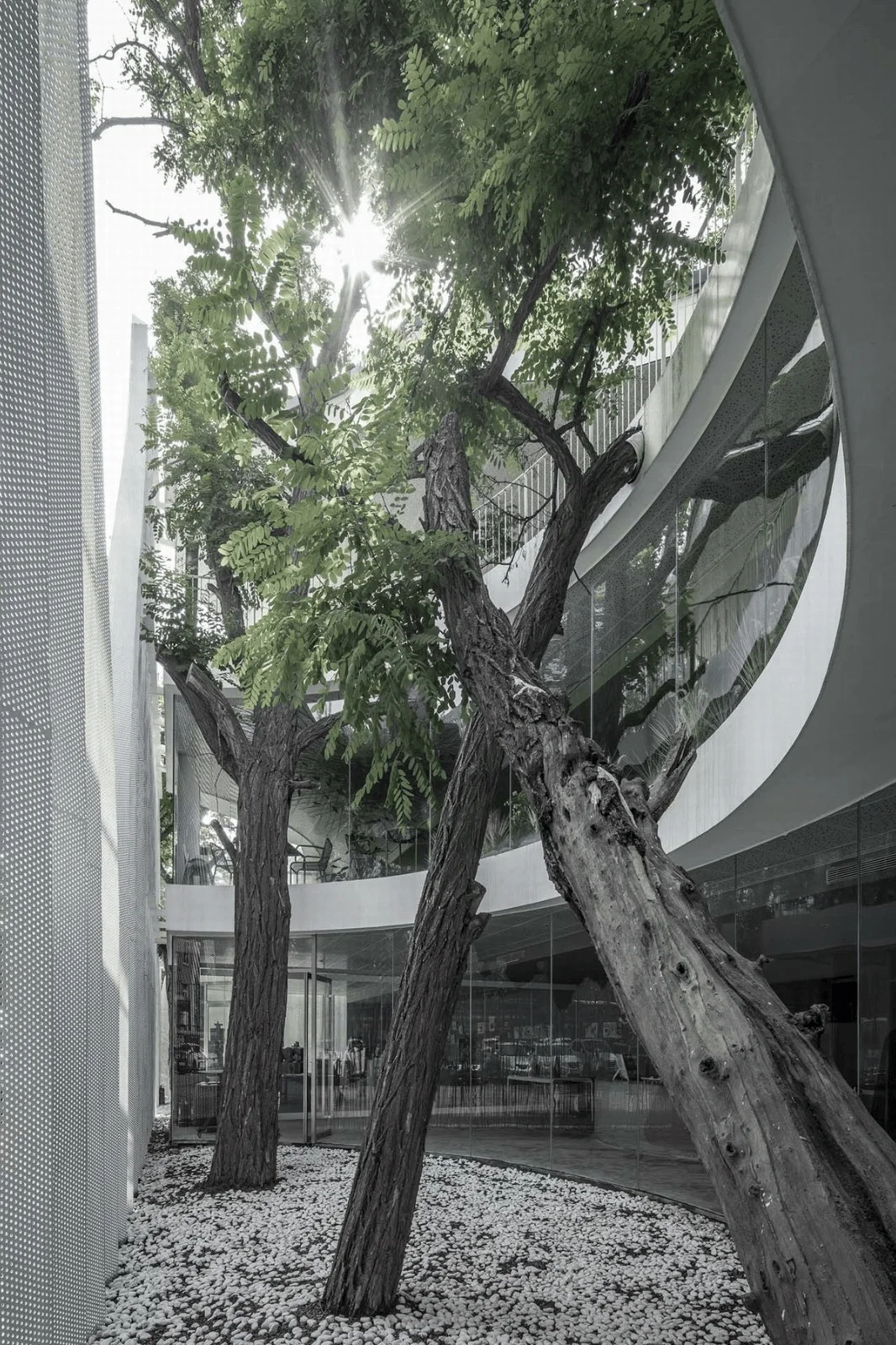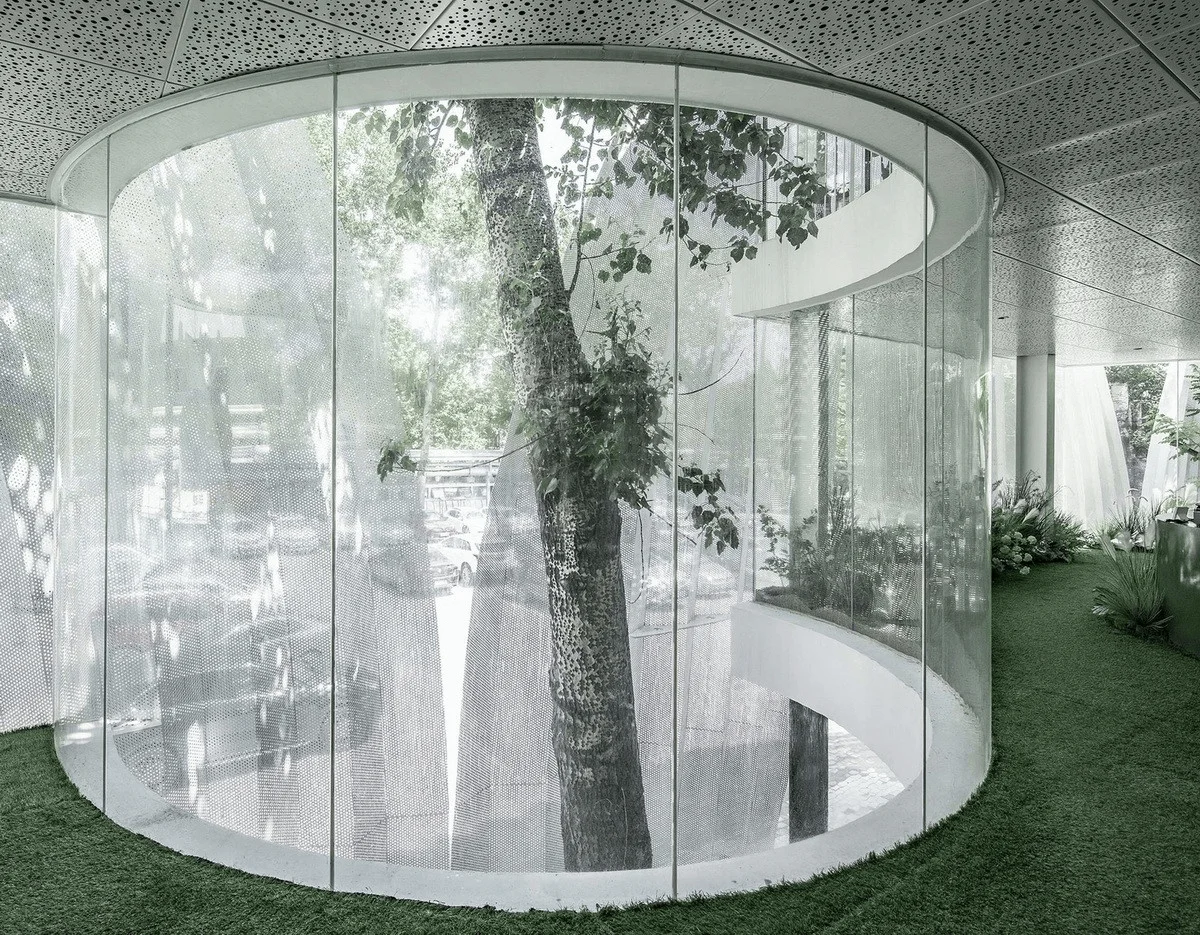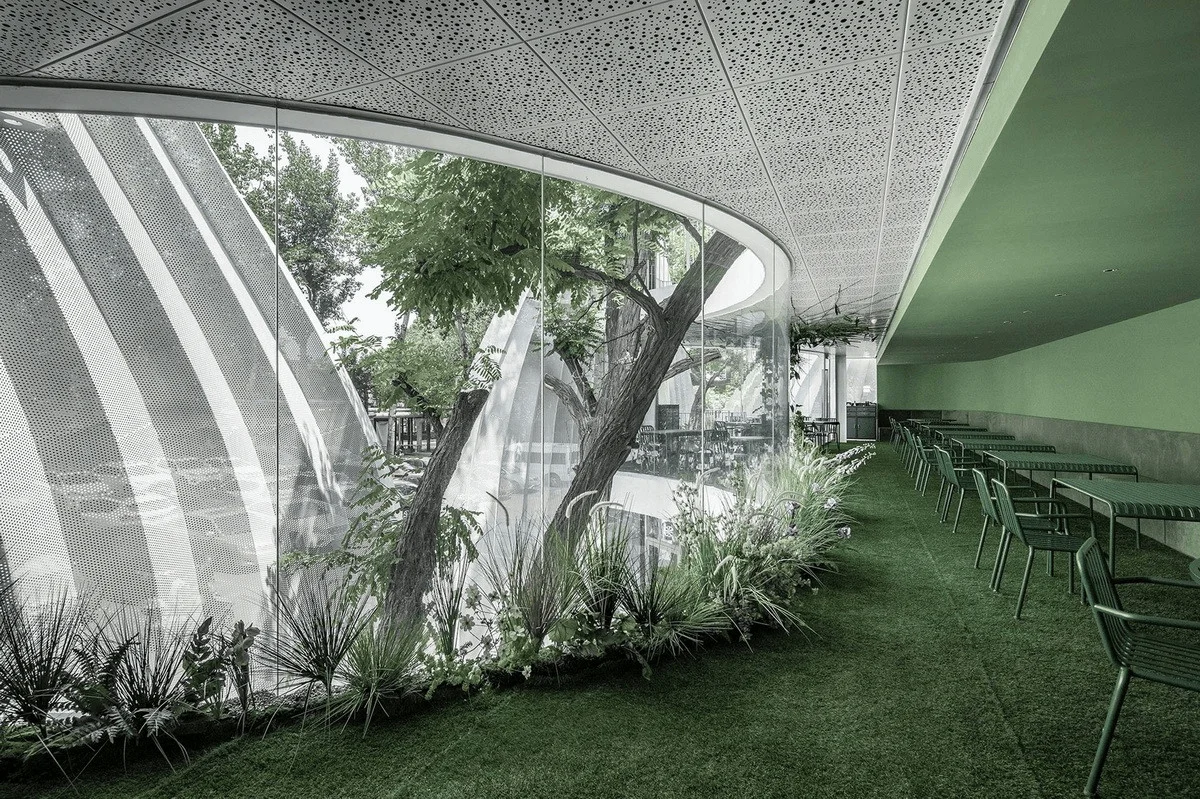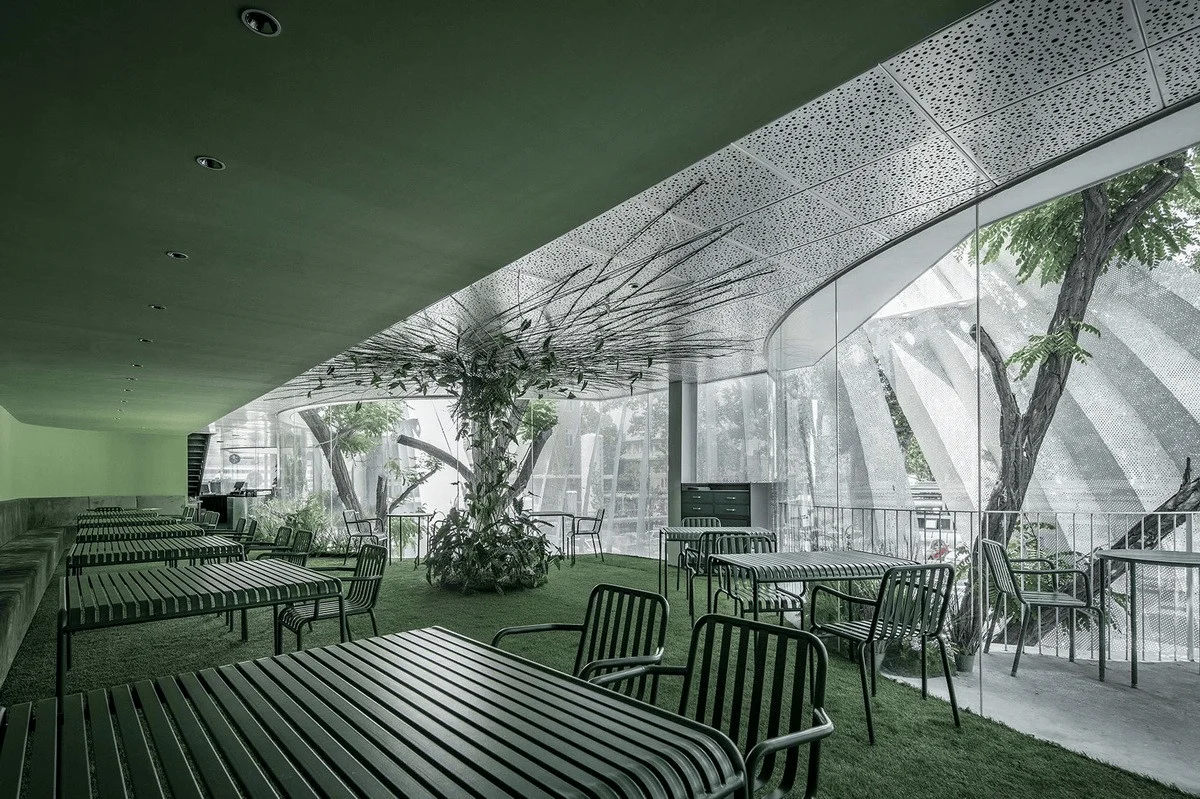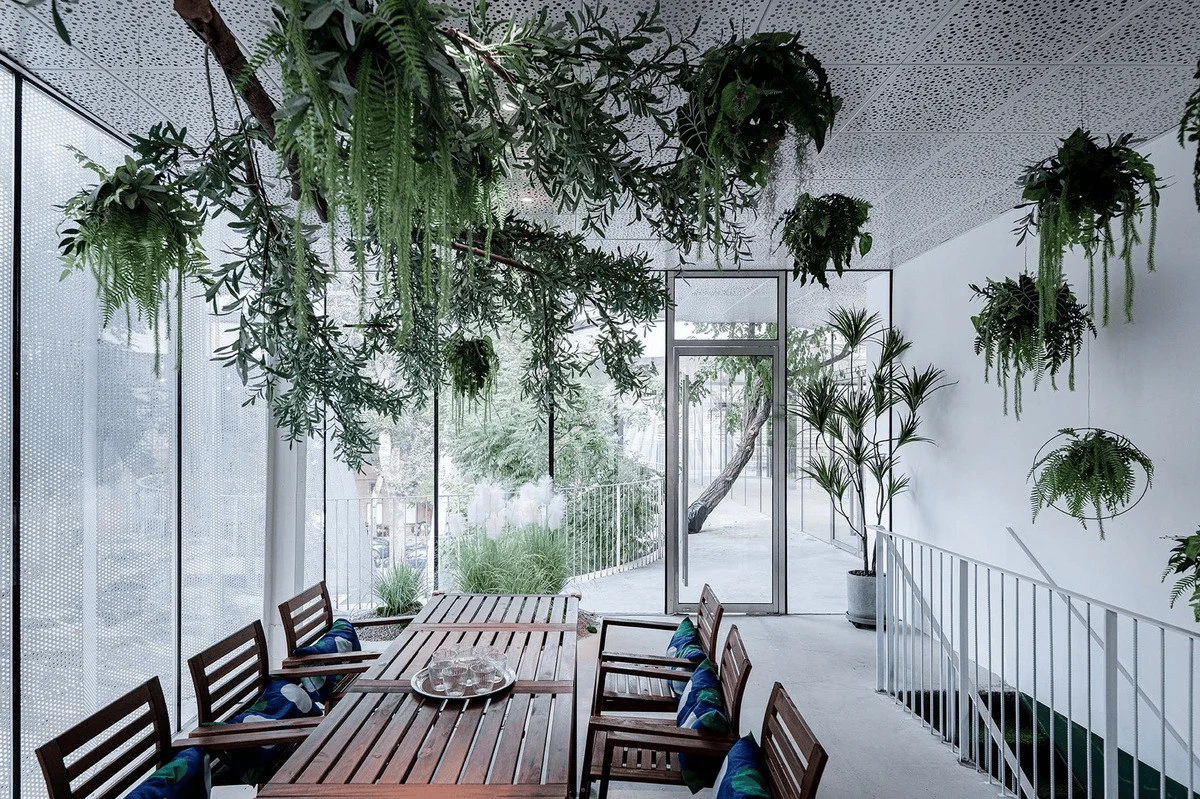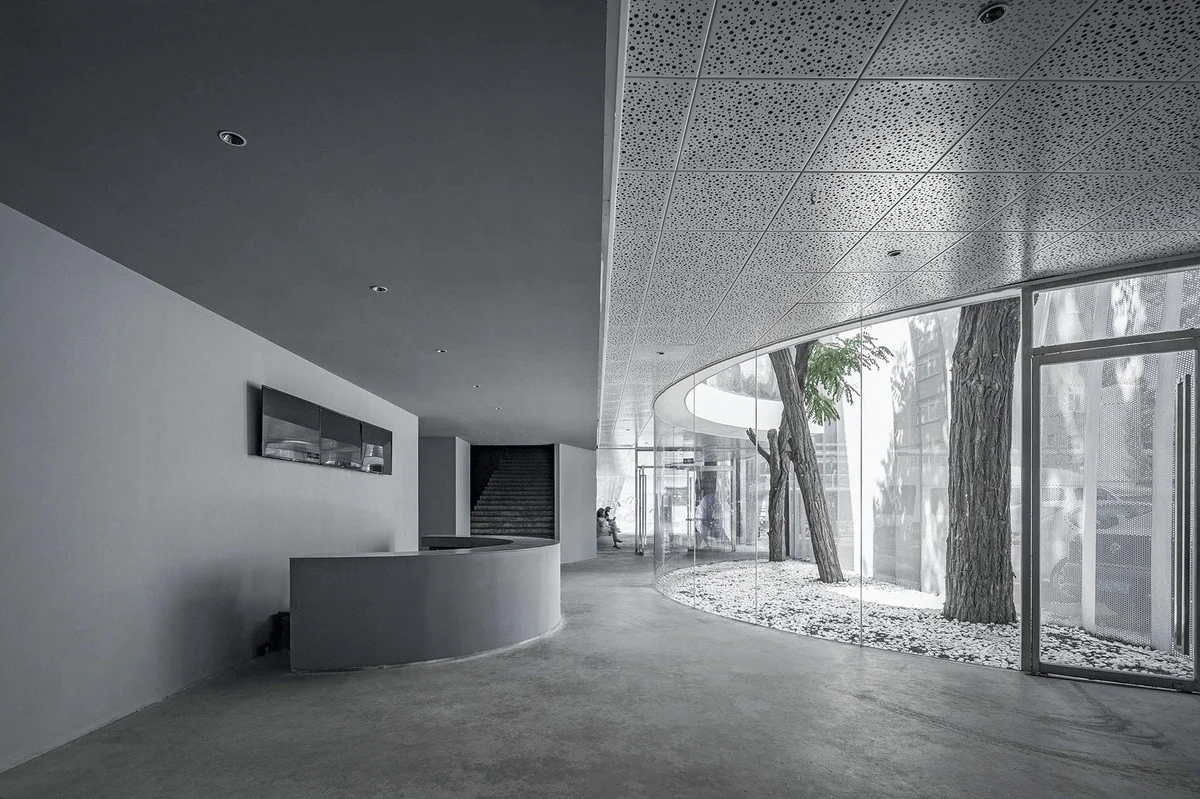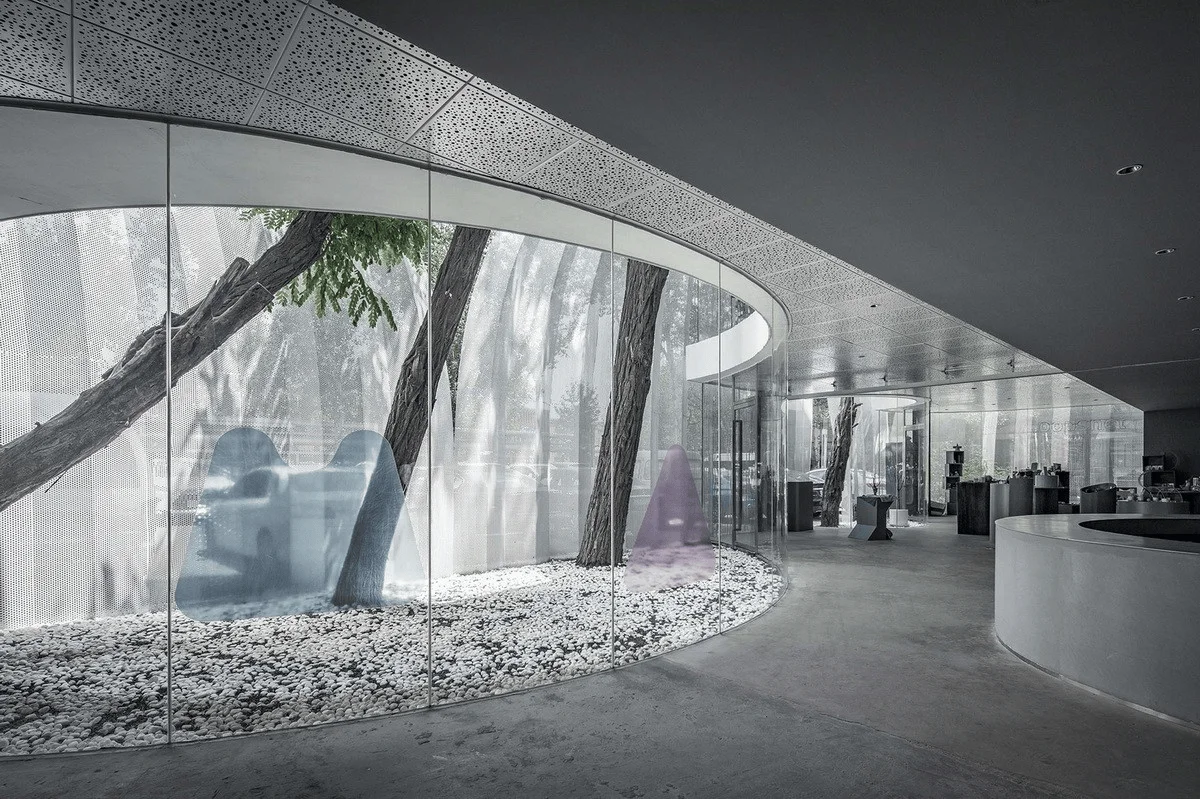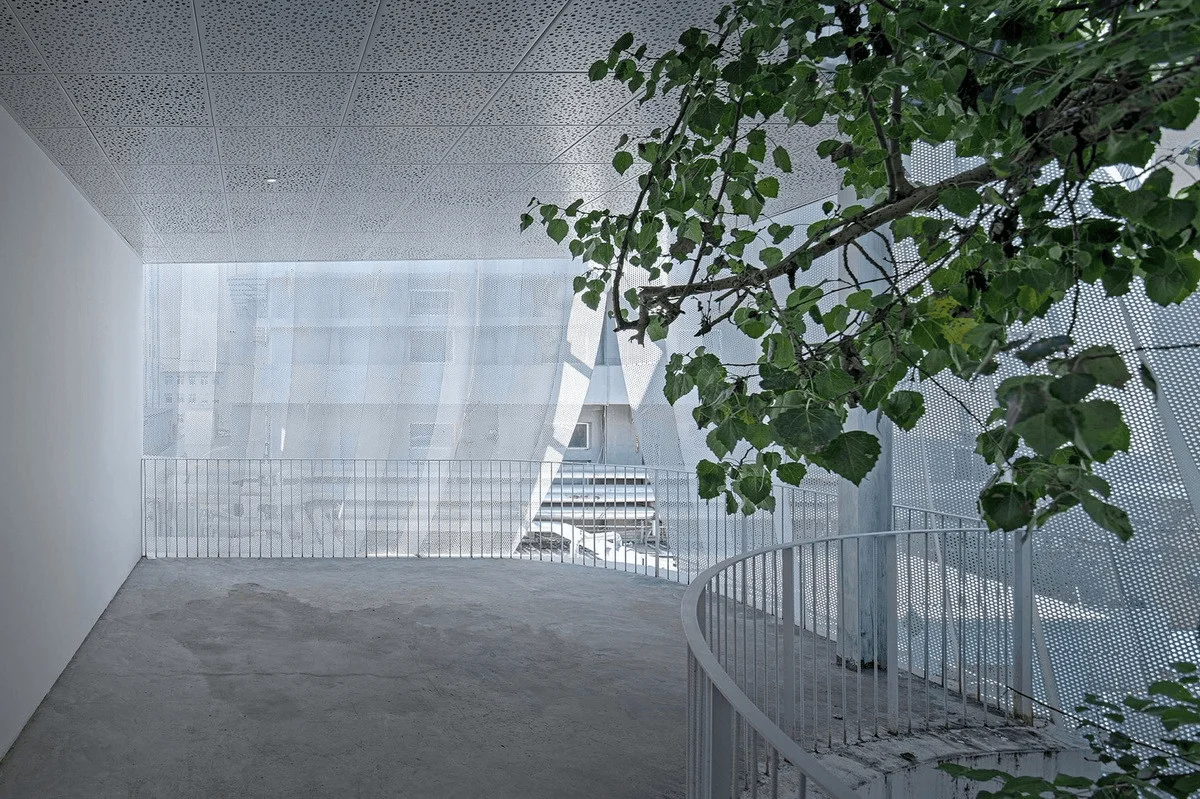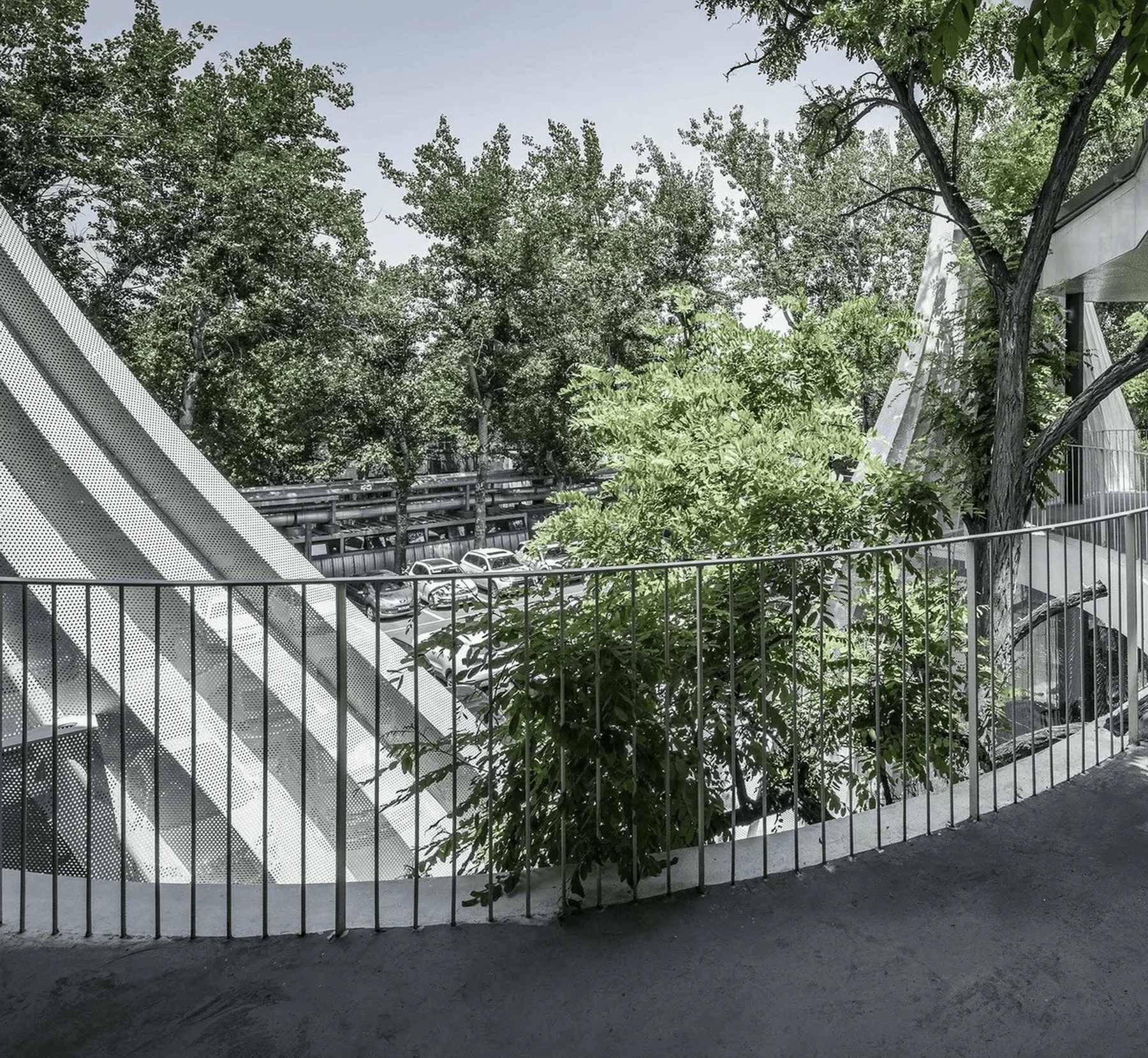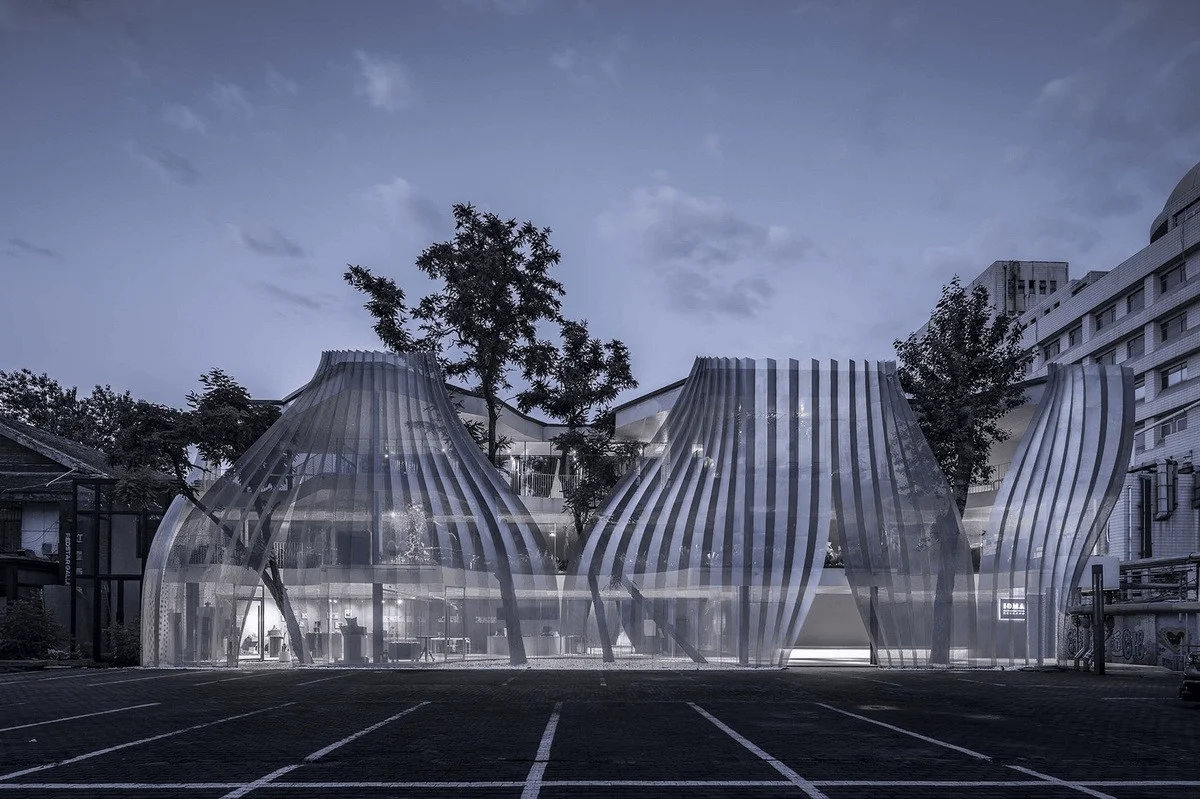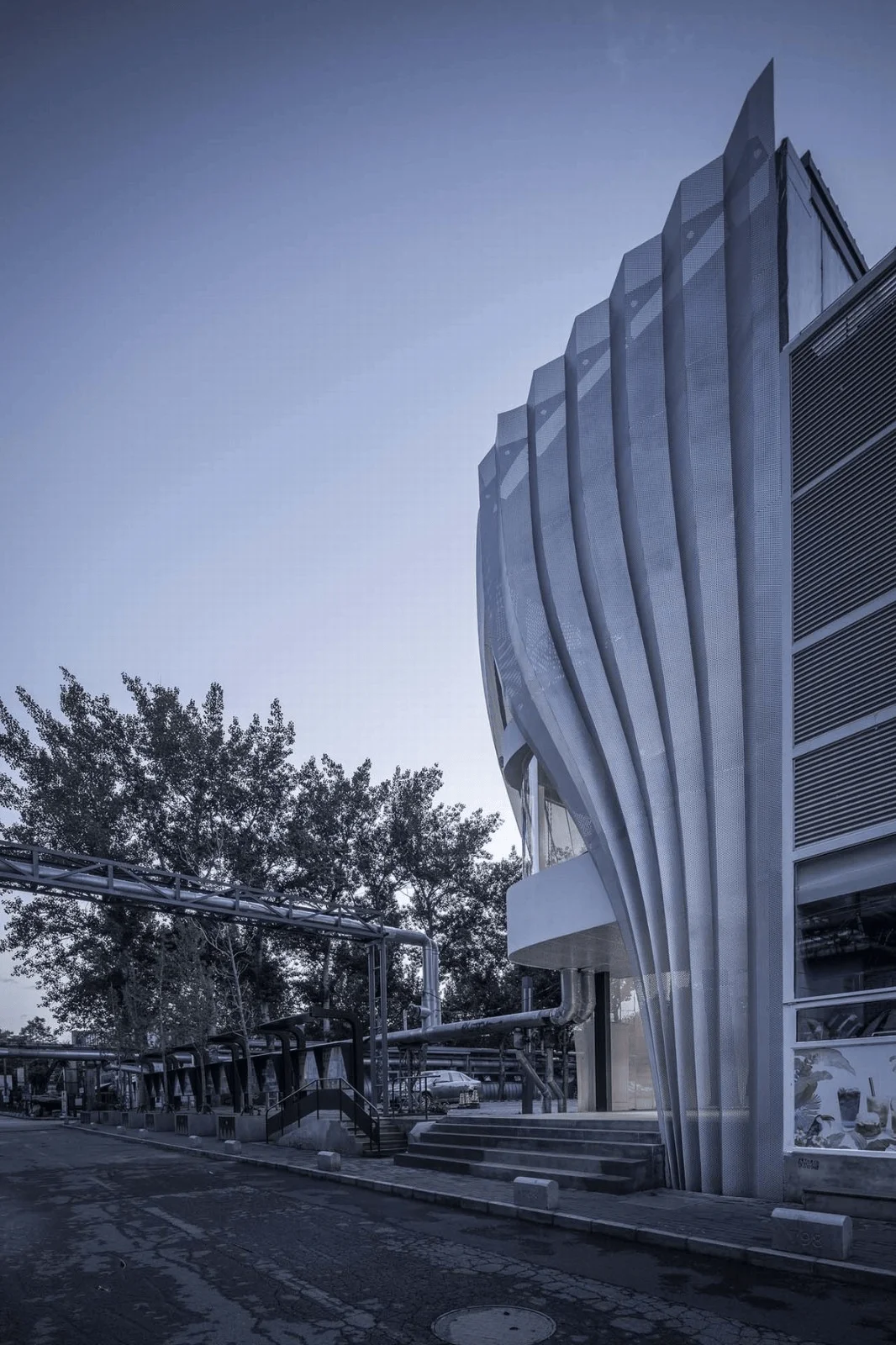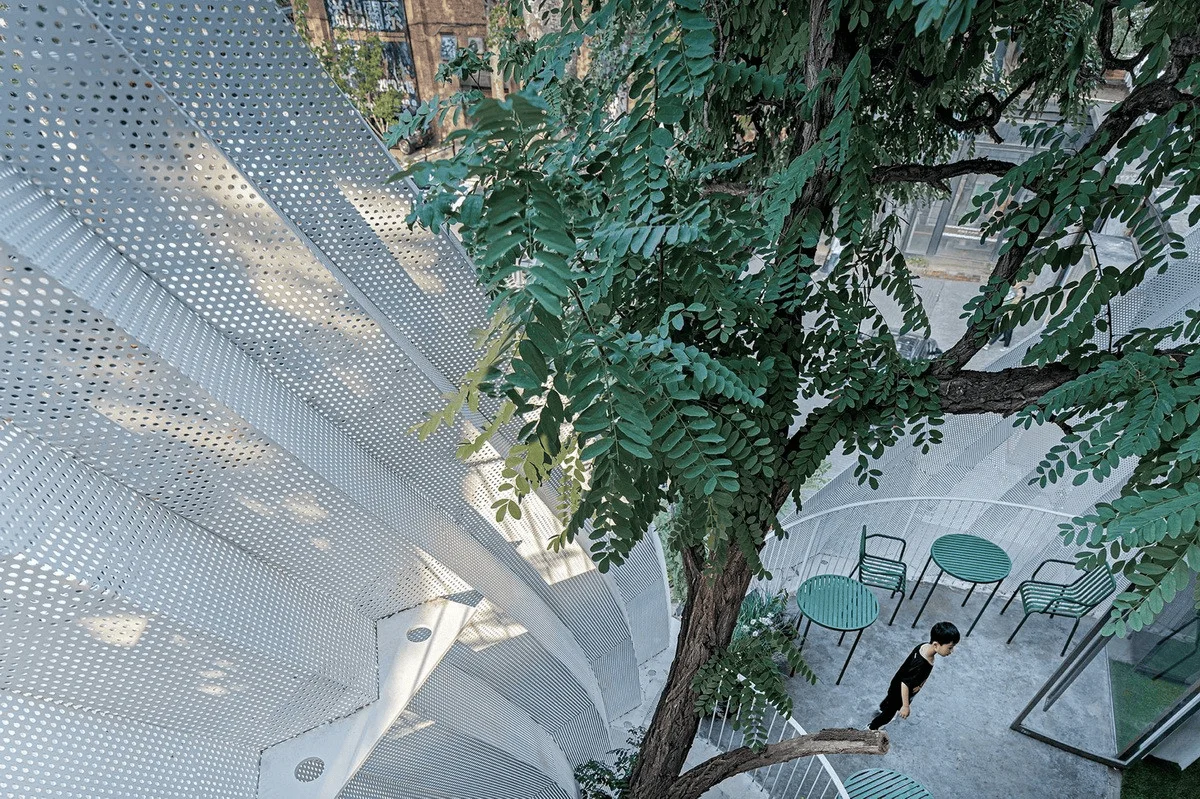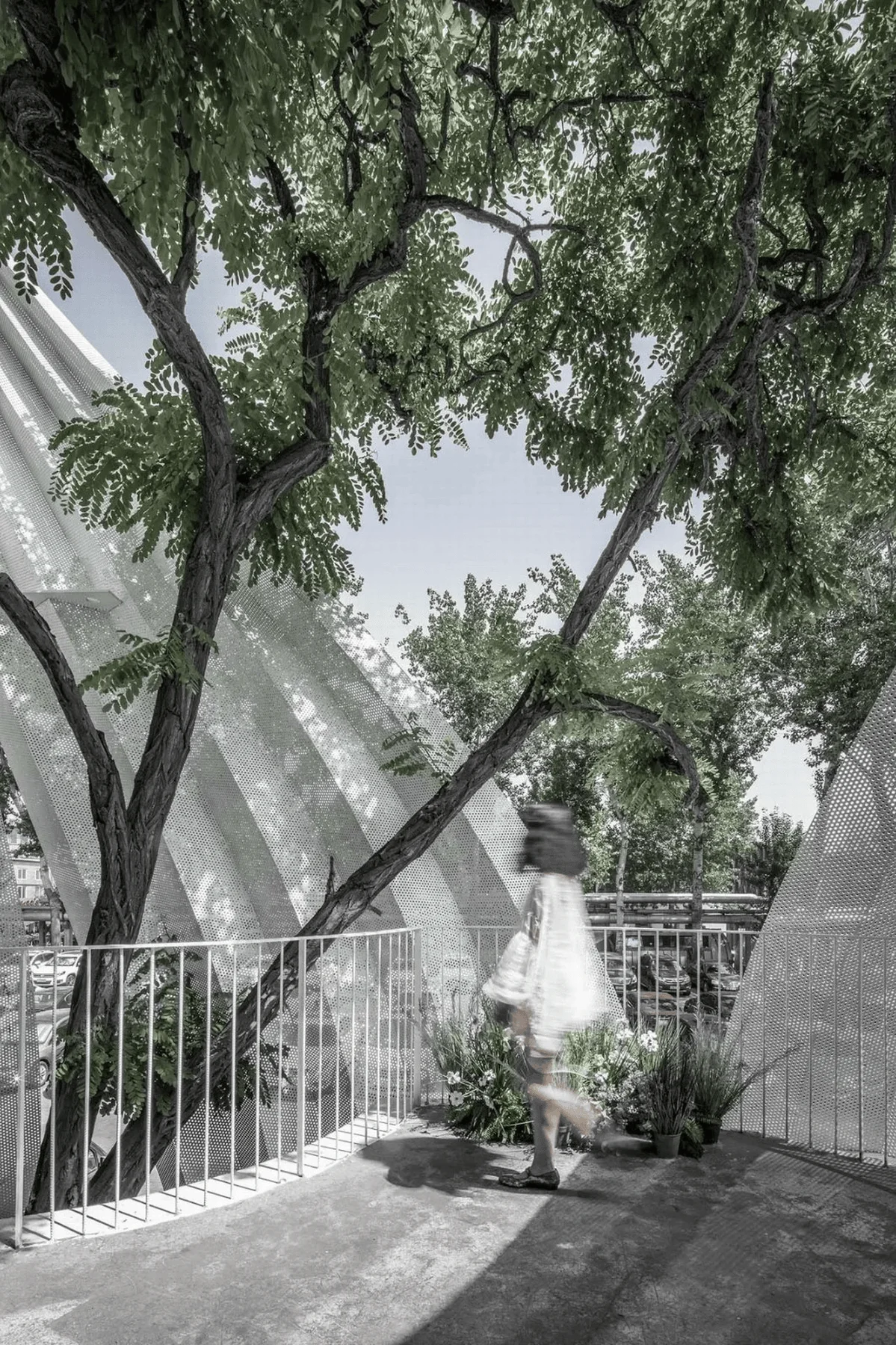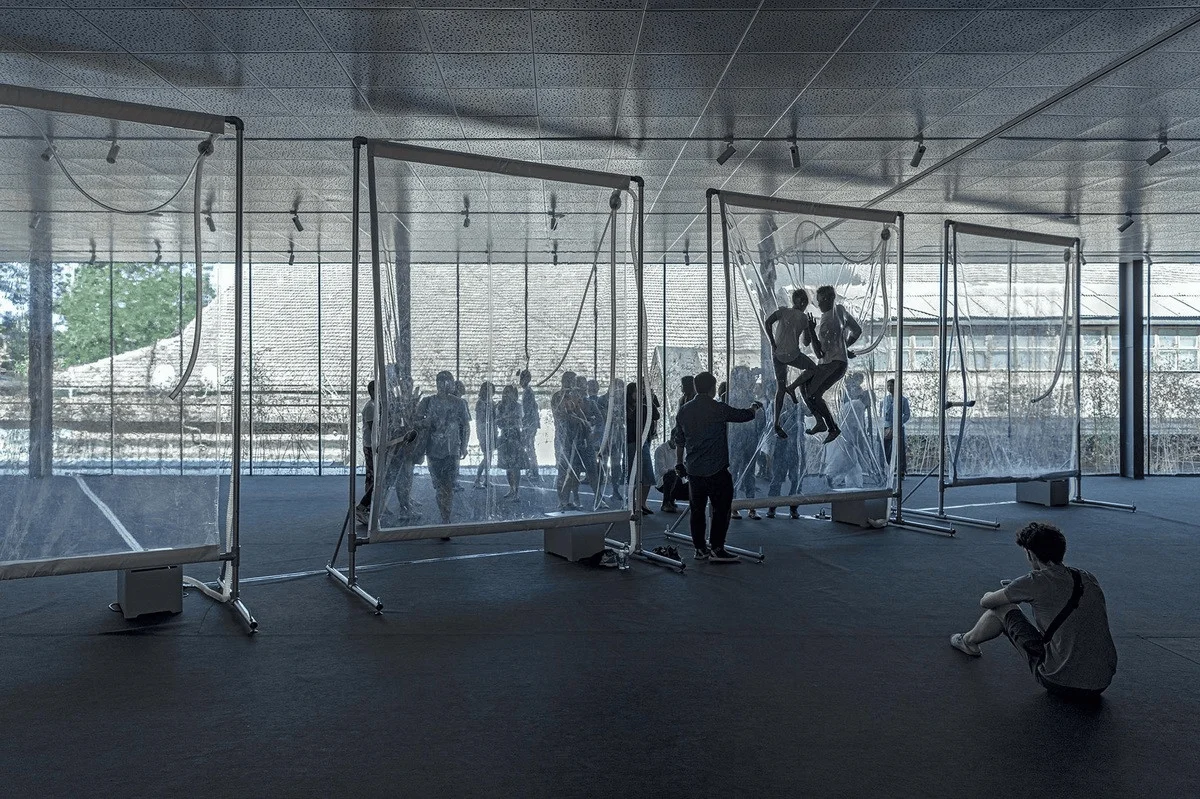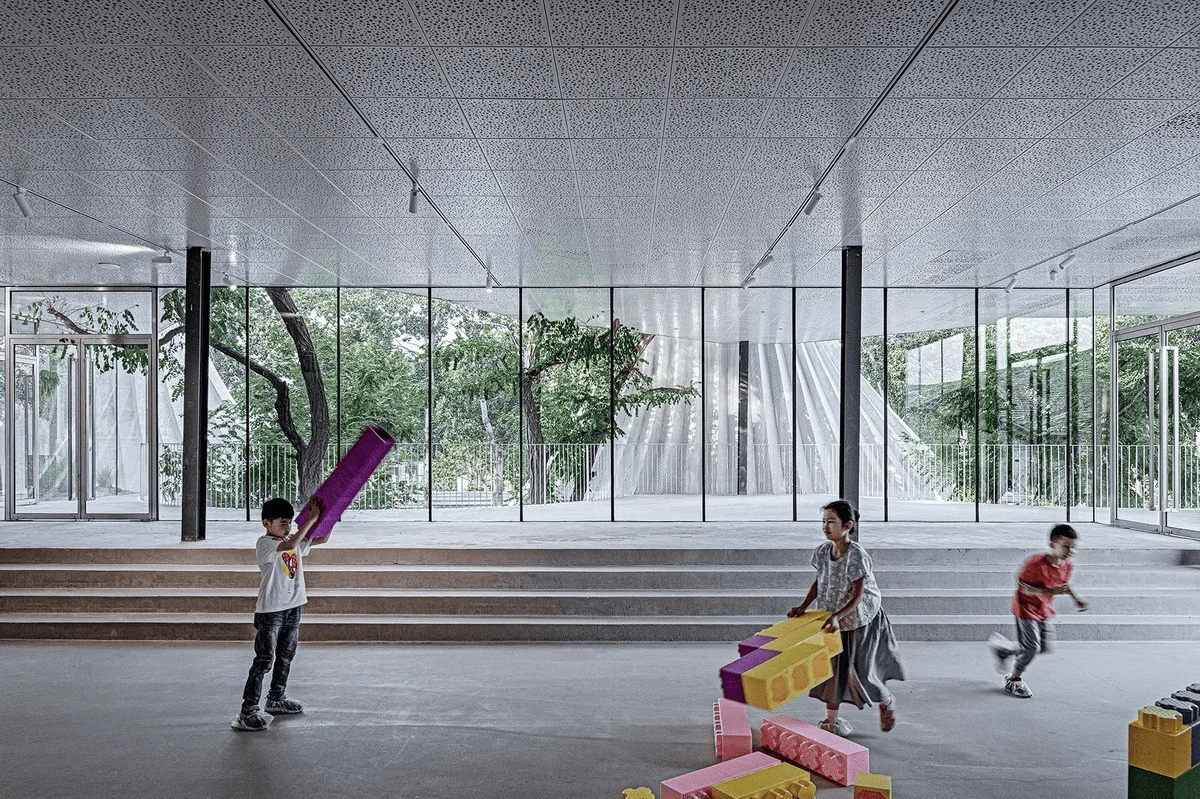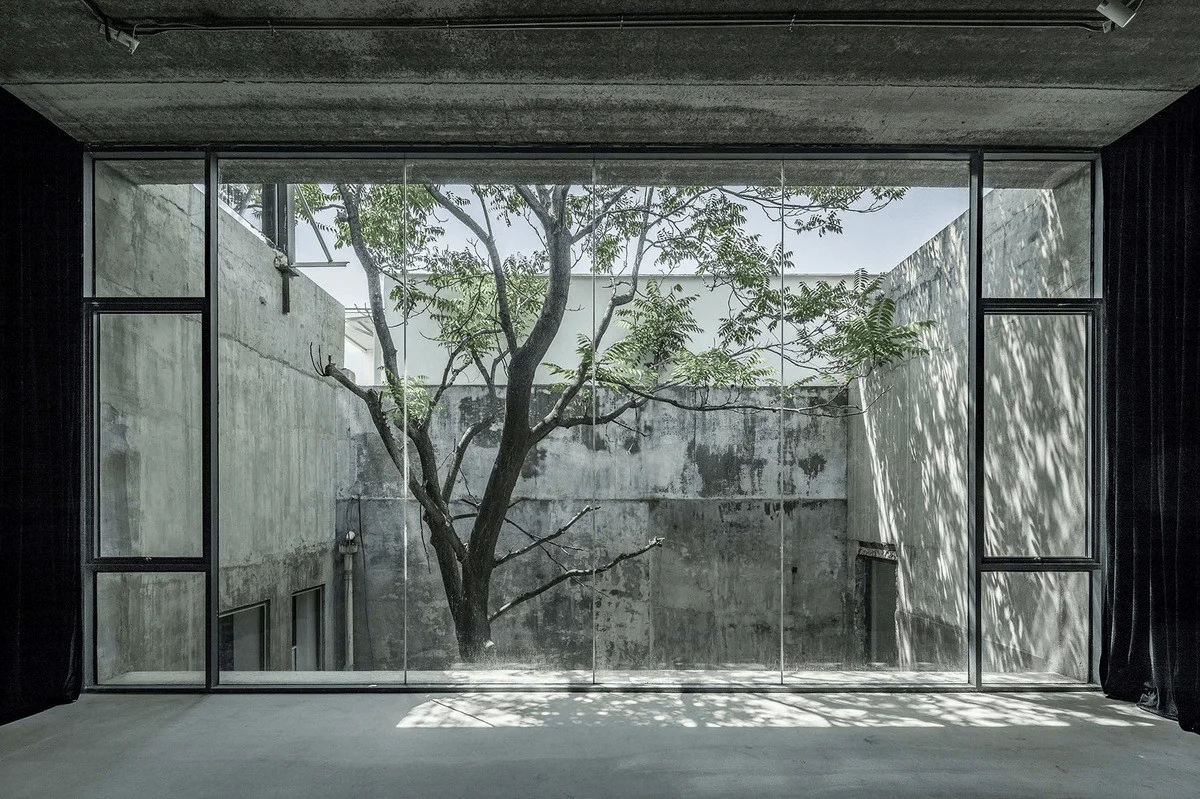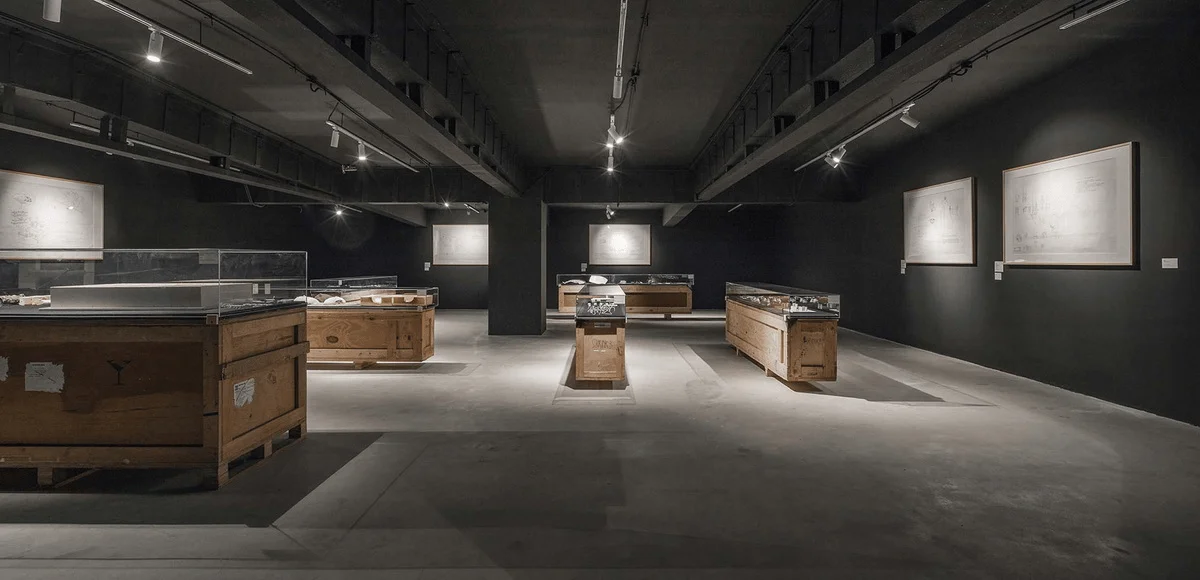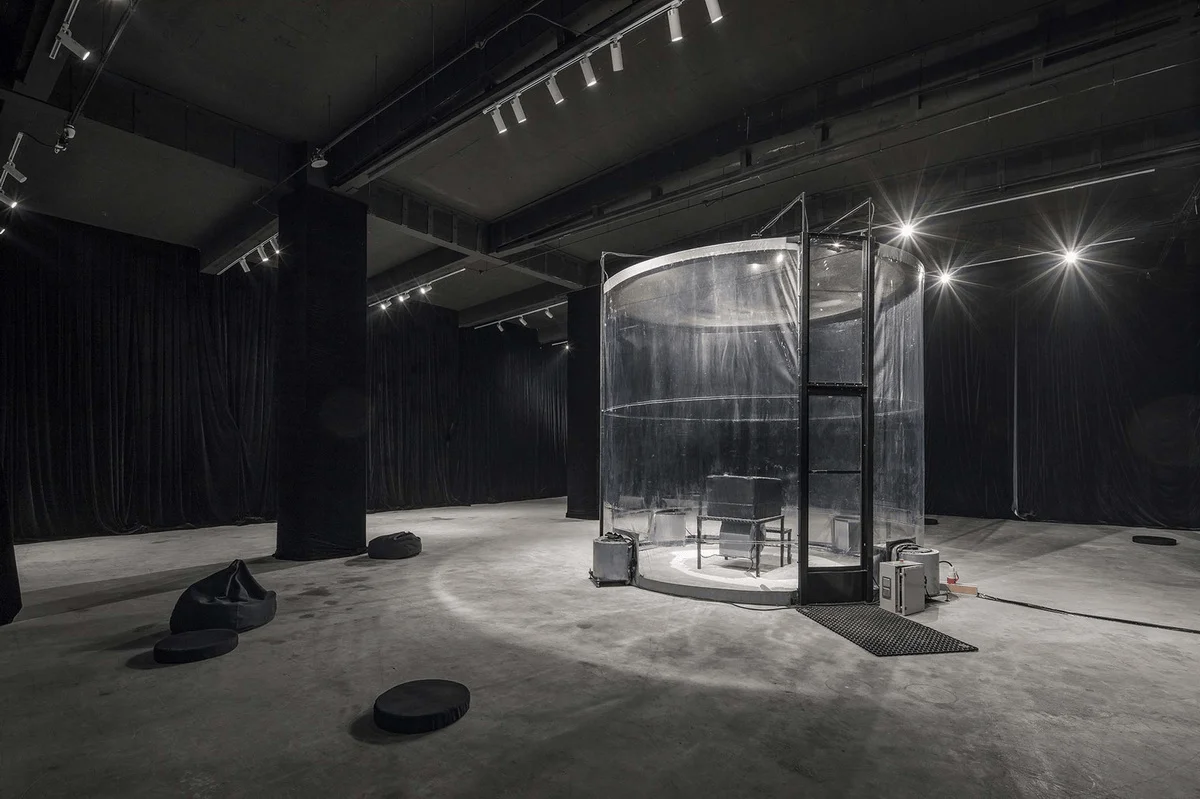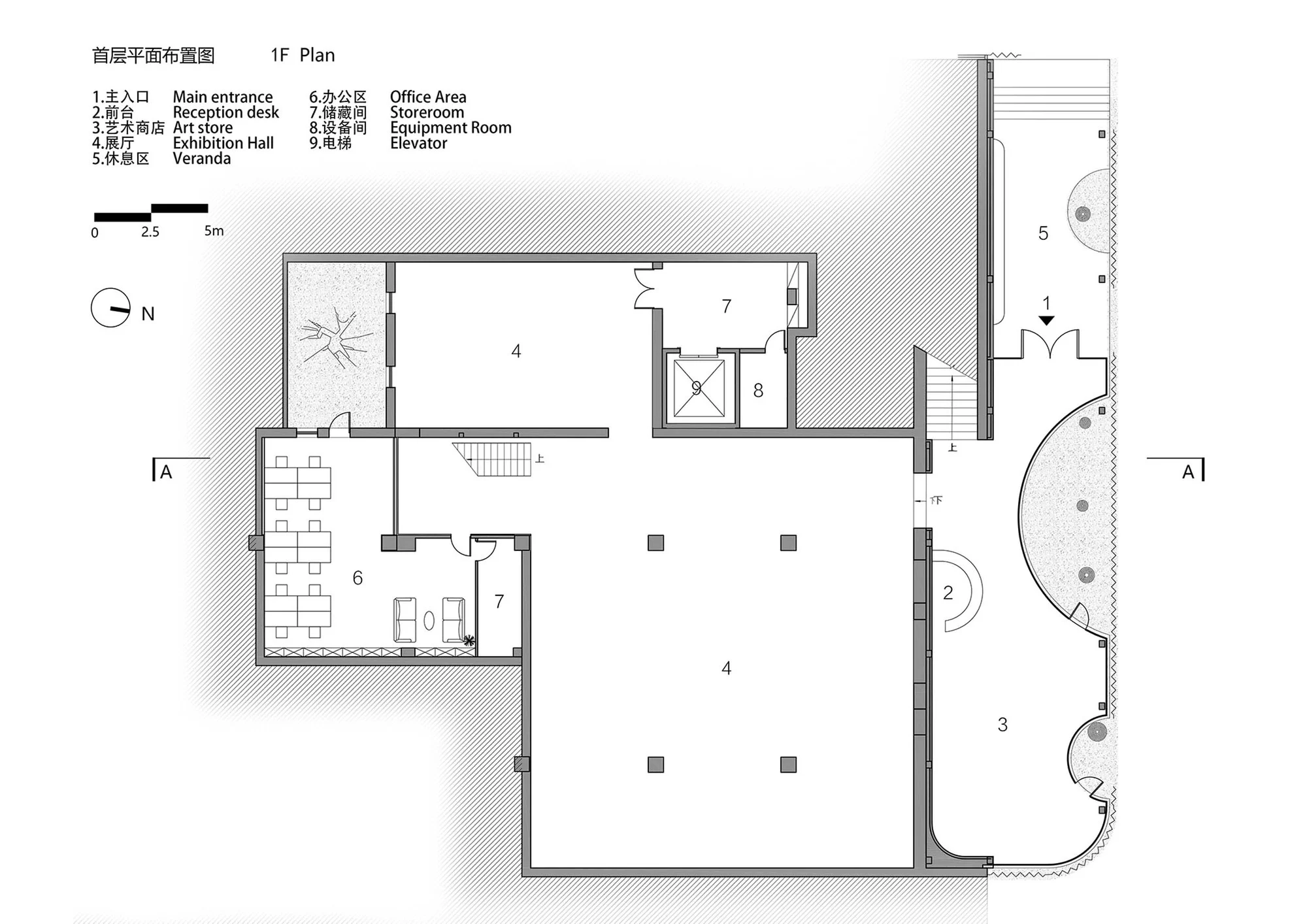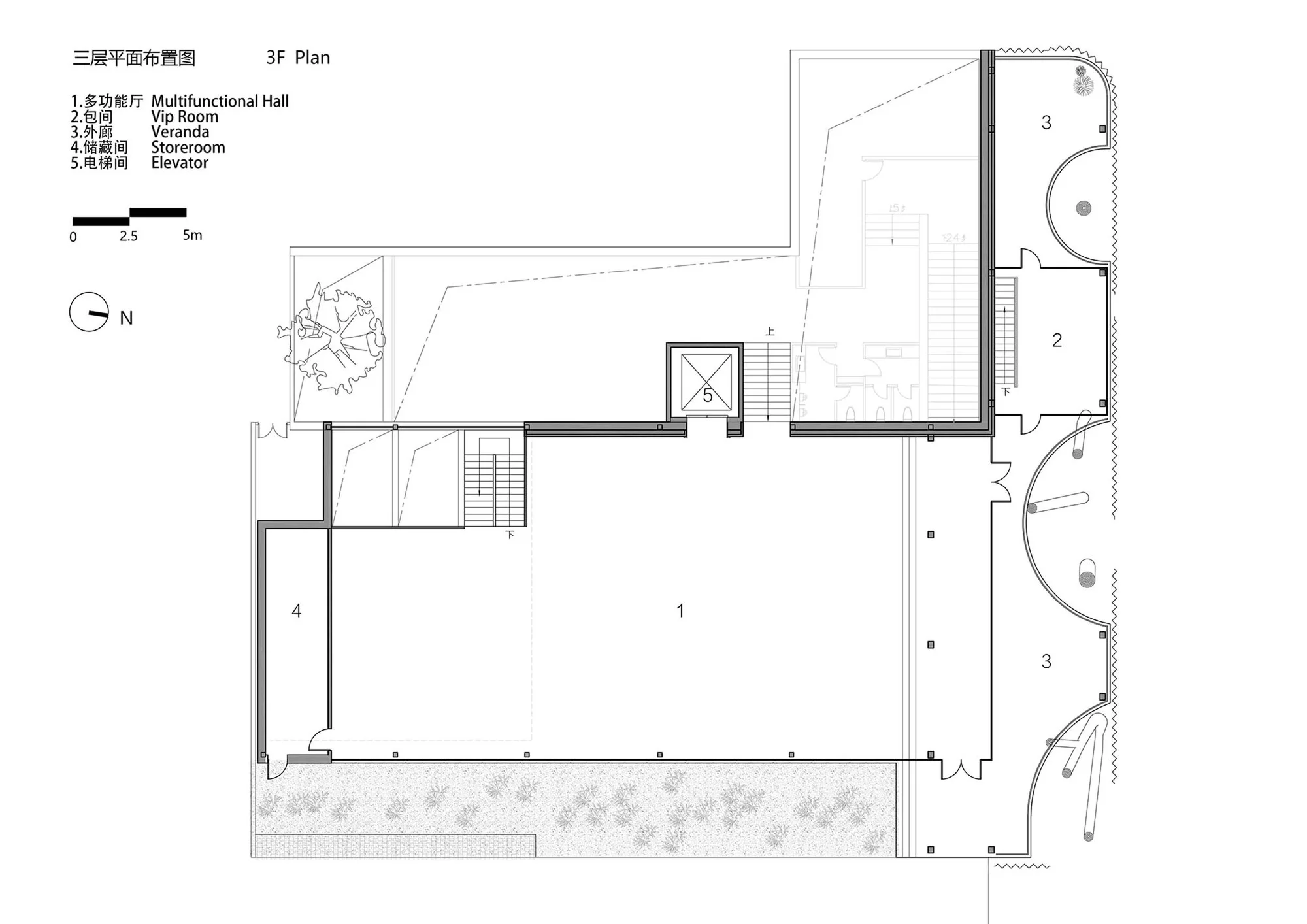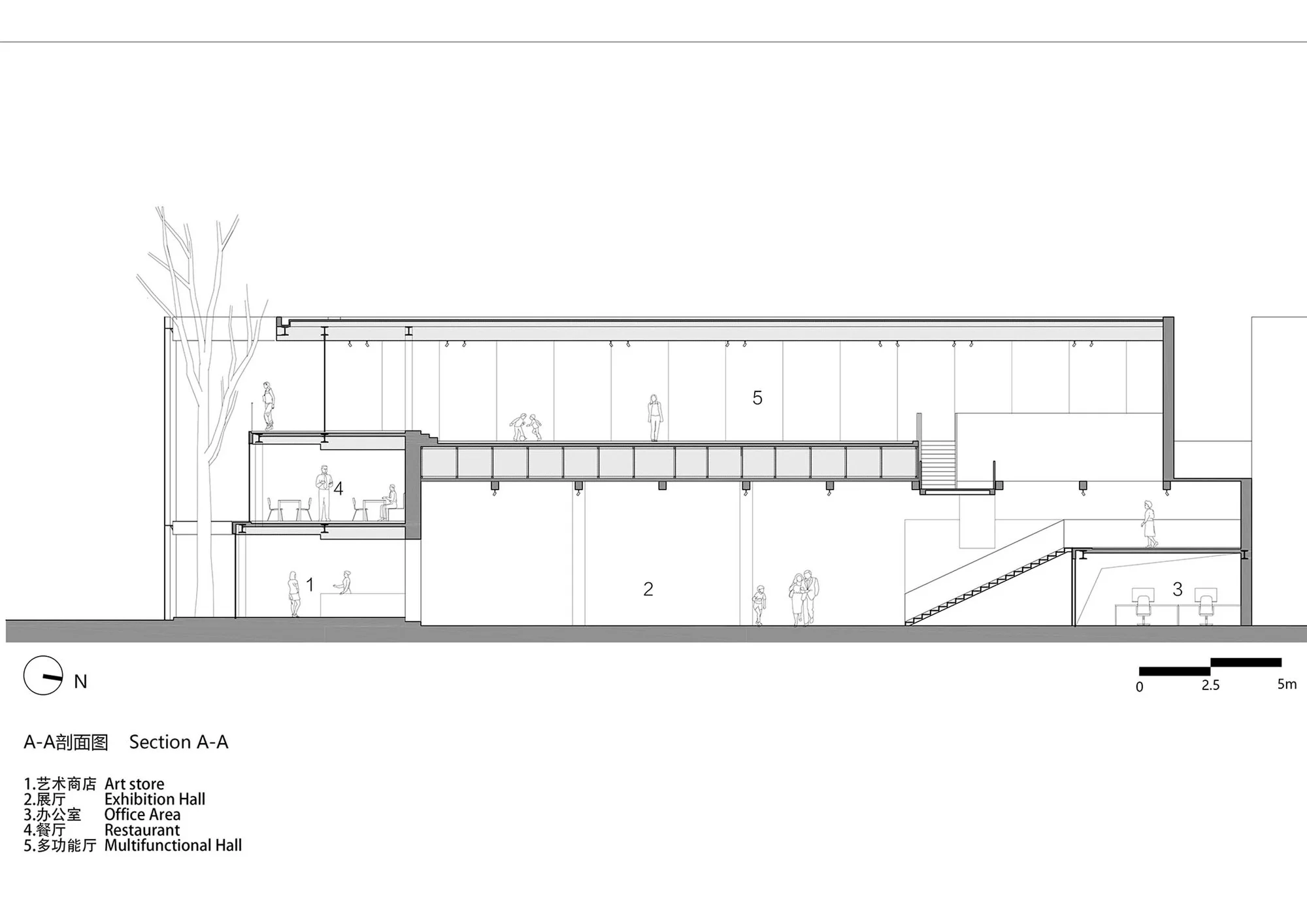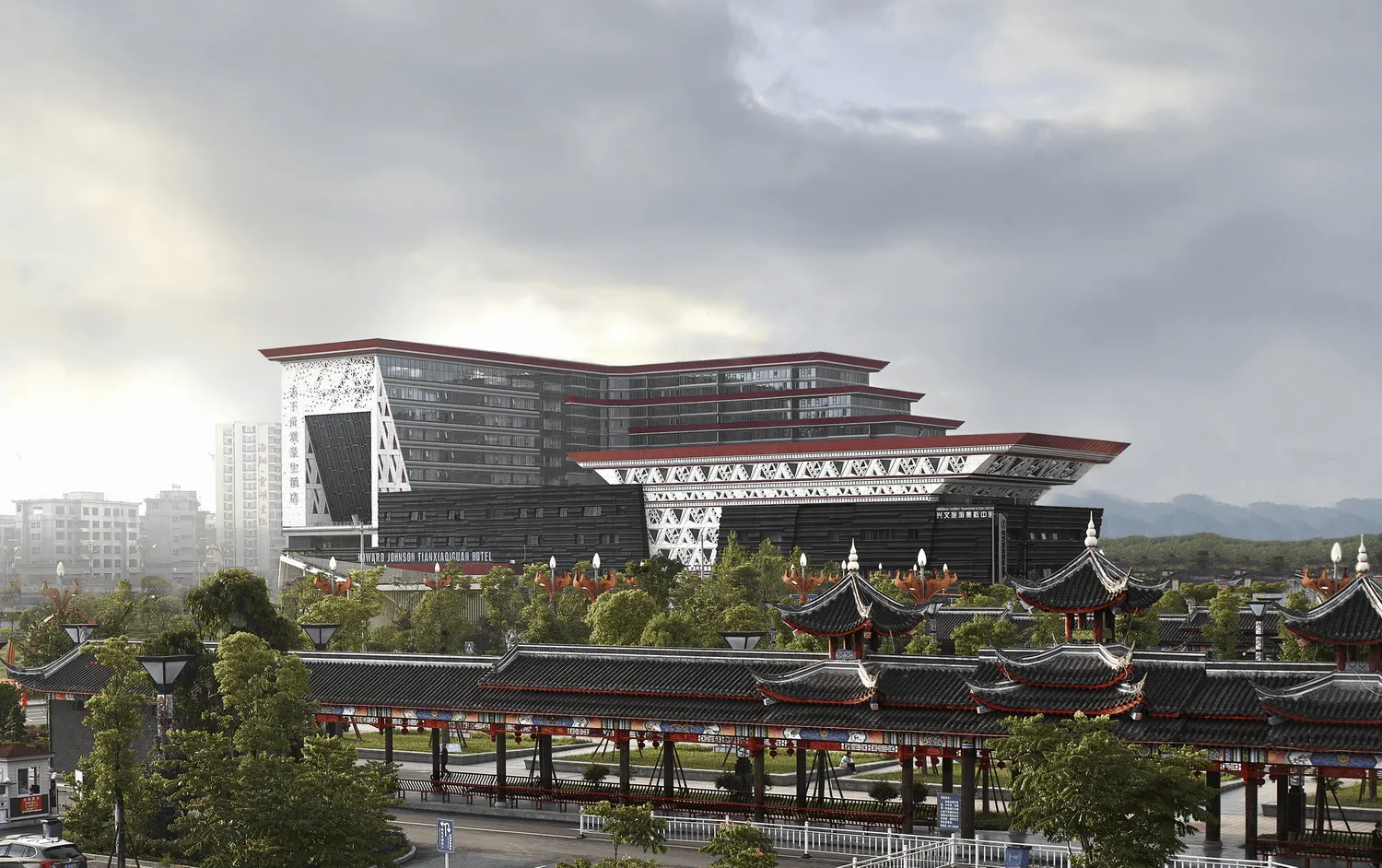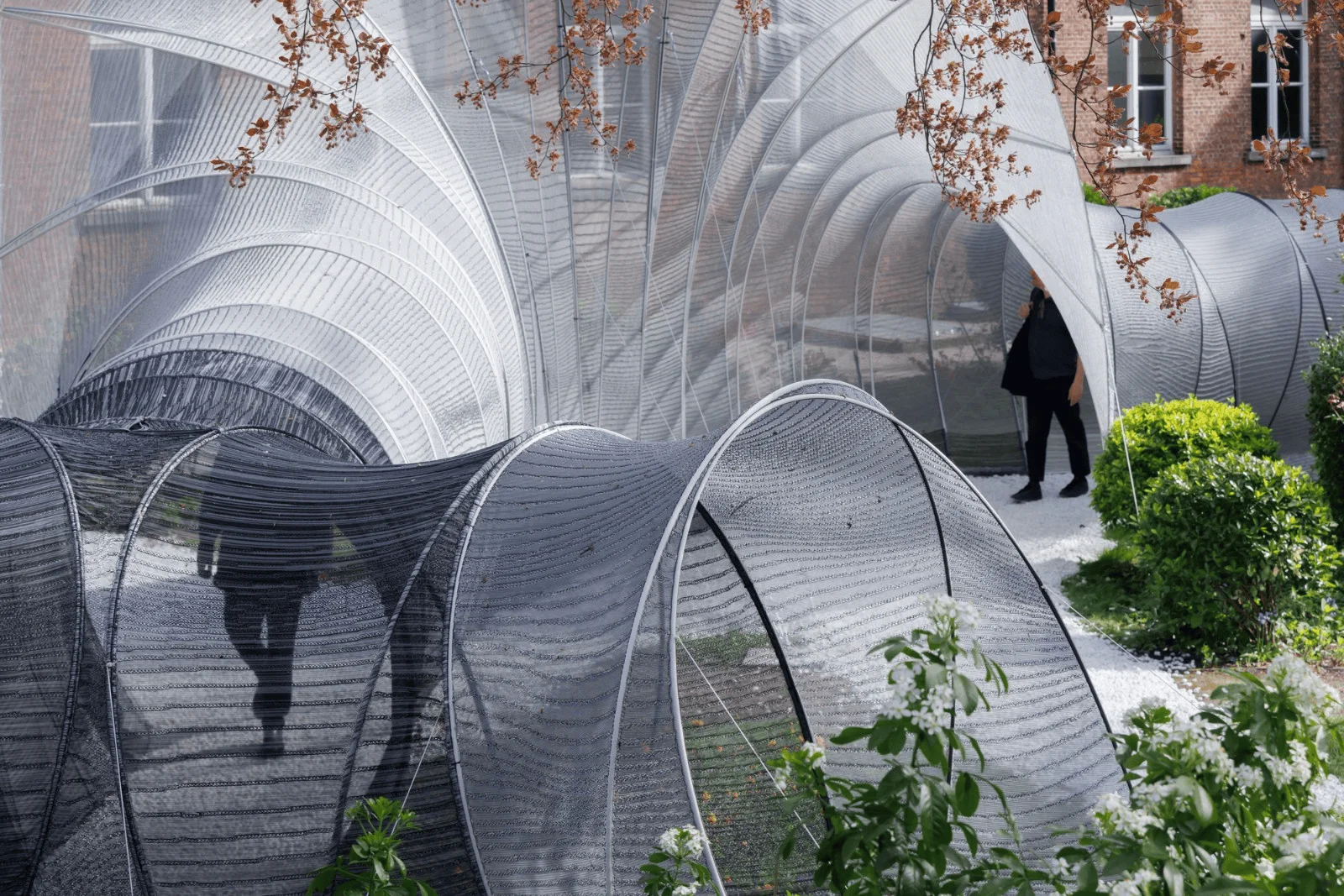Atelier Architecture has transformed the Aimas Art Center in Beijing, China, into a dynamic and welcoming space, guided by the concept of symbiosis. The project fosters a harmonious coexistence between new and old, interior and exterior, architecture and nature, and art and people.
The original factory building was cleverly reinterpreted, with additions on the top floor and along the street facade to accommodate the gallery’s diverse future needs. The design team prioritized a clear and inviting flow, breaking from the traditional, rigid exhibition route that often creates a sense of distance between visitors and the artwork. Instead, they created a circular flow, allowing visitors to freely explore the gallery’s various spaces. The original layout was modified, incorporating new stairs and elevators, transforming the viewing experience into a more engaging and interactive journey.
The project also seamlessly integrates the surrounding nature into the design. By carefully incorporating several curved courtyards, the existing trees on the site were preserved. These courtyards, along with the trees, define the building’s character. Visitors encounter a dynamic relationship with the trees as they move through the gallery, from roots to branches. The integration of nature brings a sense of tranquility and a constant evolution to the space.
The exterior facade is clad in semi-transparent metal panels, creating a shimmering veil that allows the trees to grow through it, blurring the boundaries between nature and architecture. The transformation of the Aimas Art Center into a welcoming and open space, encouraging dialogue and interaction, stands as a testament to the power of thoughtful design and the symbiotic relationship between architecture, nature, and human experience.
Project Information:
Project: Aimas Art Center, Beijing, China
Architect: Atelier Architecture
Area: 3,000.0 sqm
Year: 2019
Photographs: Jin Weiqi
Lead Design: Han Wenqiang
Design Team: Cao Chong, Wen Chenhan, Huang Tao
Structural Design: Zhang Fu Hua
Electrical Design: Zheng Baowei, Cheng Guofeng
HVAC Design: Yu Yan


